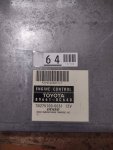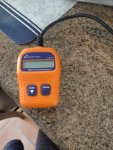I think it’s changed now to all readiness monitors must be complete, but it used to be 1996-2000 model years were allowed 2 not ready and 2001-present were allowed 1. Doing an actual obd2 drive cycle will help speed up the process vs just driving around. I had to do this a few years ago to be able to pass. Luckily I was allowed 2 monitors to not be ready and my code at that time was specific to the evap monitor, which usually always sets last.
The OBDII drive cycle begins with a cold start (coolant temperature below 122 degrees F and the coolant and air temperature sensors within 11 degrees of one another).
NOTE: The ignition key must not be on prior to the cold start otherwise the heated oxygen sensor diagnostic may not run.
1. As soon as the engine starts, idle the engine in drive for two and a half minutes with the A/C and rear defrost on. OBDII checks oxygen sensor heater circuits, air pump and EVAP purge.
2. Turn the A/C and rear defrost off, and accelerate to 55 mph at half throttle. OBDII checks for ignition misfire, fuel trim and canister purge.
3. Hold at a steady state speed of 55 mph for three minutes.
OBDII monitors EGR, air pump, O2 sensors and canister purge.
4. Decelerate (coast down) to 20 mph without braking or depressing the clutch. OBDII checks EGR and purge functions.
5. Accelerate back to 55 to 60 mph at half throttle. OBDII checks misfire, fuel trim and purge again.
6. Hold at a steady speed of 55 to 60 mph for five minutes.
OBDII monitors catalytic converter efficiency, misfire, EGR, fuel trim, oxygen sensors and purge functions.
7. Decelerate (coast down) to a stop without braking. OBDII makes a final check of EGR and canister purge.
I had to do this out by blue diamond in the middle of the night on a weekday












